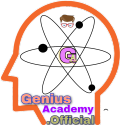History of India
Bharatvarsha: The Indian Subcontinent
The Indian subcontinent, which stretches from the Himalayas in the north to the Indian Ocean in the south, has been known since ancient times as Bharatvarsha. This name comes from ancient Indian epics and the Puranas, where the region is described as the land of King Bharat, and the people living here are called Bharati, meaning the children of Bharat.
In later periods, foreigners referred to this region by different names. The Greeks called it India, while medieval Muslim historians referred to it as Hind or Hindustan.
Classification of Indian History
To study the long and rich history of India more conveniently, historians have divided it into three broad periods:
- Ancient India (up to around 700 CE)
- Medieval India (approximately 700 CE to 1700 CE)
- Modern India (from 1700 CE onwards, till today)
Ancient India
We learn about ancient Indian history through four main types of sources:
- Religious texts
- Historical texts
- Accounts of foreign travellers
- Archaeological sources
Religious and Historical Texts
The oldest religious texts of India are the Vedas. They were compiled by the sage Maharishi Krishna Dwaipayana Ved Vyasa. There are four Vedas:
- Rigveda
- Yajurveda
- Samaveda
- Atharvaveda
1. Rigveda
- The Rigveda is the oldest Veda and is a collection of hymns (Suktas) arranged into 10 Mandalas (books). It contains a total of 1028 hymns (including 11 from the Valakhilya text), and 10,462 verses in total.
- The hymns were composed by various sages and were recited orally. The person who recited a hymn was called a Hotri.
- Mandala 3 contains the Gayatri Mantra, composed by Rishi Vishwamitra, dedicated to Savitri (Sun God).
- Mandala 9 is devoted mainly to Soma, a sacred plant and deity.
- Mandala 8’s handwritten hymns are called Khil Suktas.
- Mandala 10 includes the *Purushasukta, which gives the earliest reference to the Chaturvarna (four-fold Varna system) –
- Brahmin (from the mouth),
- Kshatriya (from the arms),
- Vaishya (from the thighs), and
- Shudra (from the feet) – all born from the cosmic being Purusha (Brahma).
Note:– Later texts like the Dharmasutras clearly defined the roles, duties, and privileges of these four castes.
- Rigveda has 250 hymns dedicated to Indra and 200 hymns to Agni, showing their importance in Vedic religion.
- The Shatpatha Brahmana, a prose text, is considered the most important Brahmana after the Rigveda for understanding Vedic rituals.
2. Yajurveda
- This Veda contains mantras for sacrifices and rules for rituals.
- It is partly in prose and partly in verse.
- The person who recites the Yajurveda is called an Adhvaryu.
3. Samaveda
- It contains musical hymns derived mostly from the Rigveda and is meant to be sung.
- Its reciter is called a Udgatri.
- It is considered the origin of Indian music.
4. Atharvaveda
- Composed by Atharva Rishi, it includes hymns related to health, magic, charms, curses, blessings, and beliefs of common people.
- It also reflects early superstitions, folk practices, and social life.
- Interestingly, it criticizes the birth of daughters.
- It mentions two important assemblies – Sabha and Samiti – as daughters of Prajapati (creator god).
Note: Rigveda is the earliest, and Atharvaveda is the latest among the four Vedas.
Vedangas (Auxiliary Sciences of Vedas)
To understand the Vedas properly, six Vedangas were developed:
- Shiksha (Phonetics)
- Jyotisha (Astronomy & Astrology)
- Kalpa (Rituals)
- Vyakarana (Grammar)
- Nirukta (Etymology)
- Chhandas (Metrics/Prosody)
- The Puranas are rich in myths, genealogies, and ancient stories.
- Traditionally attributed to Lomaharshana or his son Ugrasrava.
- There are 18 main Puranas, but only five—Matsya, Vayu, Vishnu, Brahmanda, and Bhagavata—contain detailed dynastic histories.
- Matsya Purana is considered the oldest and most authentic.
- Puranas are in simple Sanskrit, so even Shudras and women (who were not allowed to read the Vedas) could listen to them.
- Priests used to recite these Puranas in temples.
Note:
- Maitreya Samhita shows women in a very negative light, equating them to the evils of gambling and alcohol.
- In contrast, the Shatpatha Brahmana describes women as the better half of men.
- Manusmriti is the oldest and most authoritative text among the Smritis. It reflects the society of the Shunga period.
- Narada Smriti provides insights into the Gupta period.
- The Jataka tales describe the previous births of Gautama Buddha.
- The main text of Hinayana Buddhism is Kathavatthu (Kathavastu), which contains Buddha’s life stories in the form of discussions and tales.
- Jain religious texts are called Agamas.
- The early history of Jainism is described in the Kalpasutra.
- The Bhagavati Sutra provides detailed information on the life of Mahavir and his contemporaries.
- Arthashastra, written by Chanakya (Kautilya or Vishnugupta), has 15 books and 180 chapters, and provides deep insights into the Mauryan administration, politics, and economy.
- Rajatarangini, written by Kalhana, is considered the first historical book in Sanskrit. It documents the history of Kashmir.
- Chachnama, written by Ali Ahmed, describes the Arab conquest of Sindh.
- Ashtadhyayi by Panini is the first grammar book in Sanskrit. It also indirectly gives information about India before the Mauryan period.
- Gargi Samhita, written by Katyayana, is an astrological text, but it also mentions the Yavana (Greek) invasion of India.
- Mahabhashya, written by Patanjali, who was the priest of Pushyamitra Shunga, gives us information about the Shunga dynasty.
Time Measurement: BC and AD
History of India
Related Chapters:— (Click on the chapter number button below to select one of the chapter numbers given below.)

